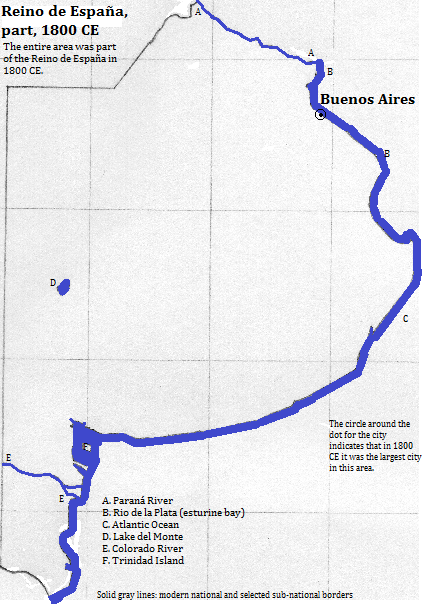
| To Duval Family Home Page | South America | Argentina |
| To Chris Home Page | Hispano-America | |
| To Earth (Geography Home Page) | Argentina and its Antarctic claims |
Buenos Aires, the national capital and co-terminous with the federal district, has about 14.724 million people
El Faro I and II are the fallest buildings (as of the summer of 2016) at 558 feet (I is 2003, II is 2005). They superceded the Torre Le Parc (Park Tower, 518 feet, 1996), which is surrounded by fenced grounds. That in turn superceded the Edificio (building) Alas (462 feet, 1950), a large based, slendered towered structure. The tallest reinforced concrete building when it opened in 1936 was the 395 foot Edifico Kavanagh. The architect, Mario Palanti, of the Palacio (palace) Barolo (1923) divided the 328 tower vertically into sections based on Dante's Divine Comedy: Paradise, Purgatorio and, at the bottom, Inferno; it was the tallest building prior to the Edifico Kavanagh. It is surmounted by a light that can be seen from Uruguay. At a corner of the famed Avenida 9 de Julio (Ninth of July Avenue) is the city's Obelisk (223 feet, 1936). The Casa Rosada (Pink House, 328 feet wide, 1898) is the office of the leader of the national government, with the legislative branch in the Congreso de la Nación. A pedestrian bridge, the Puente de la Mujer (Mother's Bridge, 525 feet long) is also famous as is the Facultad de Derecho (Law School, 1949) and the Teatro Colón (Columbus Theatre, 1908).
Tourists delight in visiting the Caminito, whose wall-pastels by Benito Quinquela Martin honored Juan de Dios Filberto, who composed a tango named 'Caminito' in 1926. Tango dancing in general is a tourist interest,
The metropolitan area is served by two important airports, the Jorge Newberry Airport within the city, and the Ministro Pisturini International Airport in Ezeiza, a city of 93 thousand
| Year | Population | Political entity |
| 1800 CE | 34,000| Reino de España (Spanish Empire) | |
| 1900 CE | 806,000| Argentina | |
| 2012 CE | 14,724,000| Argentina | |
Overview of Buenos Aires, Argentina


1. 2012 figure from world-gazetteer.com, accessed February 6, 2013.
2. 2009 figure in https://en.wikipedia.org/wiki/List_of_cities_in_Argentina_by_population, accessed April 30, 2016.
3. Information about buildings comes from emporis.com, accessed July 4, 2016.
4. A list of tourist interests is from http://www.touropia.com/tourist-attractions-in-argentina/, accessed April 30, 2016.
5. https://en.wikipedia.org/wiki/List_of_the_busiest_airports_in_South_America, accessed April 30, 2016.
6. Tables of the World's Largest Cities in Tertius Chandler, Four Thousand Years of Urban Growth, 2nd ed. (The Edwin Mellen Press, 1987). From before 1800 it was the largest city in the area that today includes the city and Buenos Aires Province.